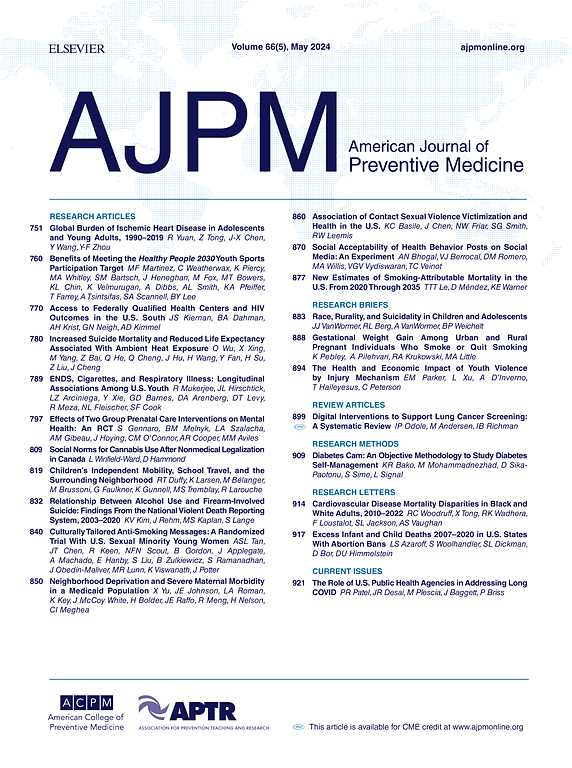行动呼吁:将医学院视为体重污名的来源,解决这一问题需要变革。
IF 4.5
2区 医学
Q1 MEDICINE, GENERAL & INTERNAL
引用次数: 0
摘要
体重耻辱感被定义为对体重较高个体的消极态度和对待,是一个主要的公共卫生问题。越来越多的证据表明它对健康有直接和间接的负面影响。随着高体重流行率的持续增加,体重污名是一种社会文化健康风险,影响了很大一部分人口。不幸的是,卫生保健系统仍然是体重耻辱的常见来源。个人报告了医生对体重相关治疗的负面影响,医生明确报告了对高体重个体的负面态度。尽管越来越多的人认识到这是医疗服务提供者之间的一个问题,但体重耻辱仍然是一种社会可接受的偏见形式,并且已被证明在医疗保健系统内特别难以针对。医学院代表了一个独特的时期,影响了医生在培训中如何准备治疗不同体型和体重的个体。要做到这一点,有必要:(1)批判性地询问体重在医学院课程中的定位方式(作为临床特征,作为边缘化的一种形式),(2)确定体重耻辱感在培训经验中明确和隐含的方式,以及(3)利用这些发现建立课程和培训经验,使医生能够为各种体型的个体提供以患者为中心和包容性的护理。当前工作的目的是将美国一所医学院的工作背景和特征化,以制定路线图来解决和消除课程和培训经验中的体重耻辱感。本文章由计算机程序翻译,如有差异,请以英文原文为准。
A Call to Action: Addressing Medical School as a Source of Weight Stigma Requires Transformative Change
Weight stigma, defined as negative attitudes and treatment toward individuals of higher body weight, is a major public health concern. Growing evidence points to its direct and indirect negative effects on health. As the prevalence of high body weight continues to increase, weight stigma represents a sociocultural health risk that impacts a significant proportion of the population. Unfortunately, the healthcare system remains a common source of weight stigma. Individuals report negative weight-related treatment from physicians, and physicians explicitly report negative attitudes about individuals of higher body weight. Although there is growing recognition that this is an issue among healthcare providers, weight stigma remains a socially acceptable form of bias and has proven particularly difficult to target within the healthcare system. Medical school represents a unique period to impact how physicians in training are prepared to treat individuals of diverse body shapes and weights. To accomplish this, it is essential to (1) critically interrogate the way body weight is positioned within the medical school curriculum (as a clinical characteristic, as a form of marginalization), (2) identify ways that weight stigma is explicitly and implicitly embedded within the training experience, and (3) leverage these discoveries to build a curriculum and training experience that produces physicians equipped to deliver patient-centered and inclusive care for individuals of all sizes. The aim of this work is to contextualize and characterize efforts at one U.S. medical school to develop a roadmap to address and undo weight stigma within the curriculum and training experience.
求助全文
通过发布文献求助,成功后即可免费获取论文全文。
去求助
来源期刊

American Journal of Preventive Medicine
医学-公共卫生、环境卫生与职业卫生
CiteScore
8.60
自引率
1.80%
发文量
395
审稿时长
32 days
期刊介绍:
The American Journal of Preventive Medicine is the official journal of the American College of Preventive Medicine and the Association for Prevention Teaching and Research. It publishes articles in the areas of prevention research, teaching, practice and policy. Original research is published on interventions aimed at the prevention of chronic and acute disease and the promotion of individual and community health.
Of particular emphasis are papers that address the primary and secondary prevention of important clinical, behavioral and public health issues such as injury and violence, infectious disease, women''s health, smoking, sedentary behaviors and physical activity, nutrition, diabetes, obesity, and substance use disorders. Papers also address educational initiatives aimed at improving the ability of health professionals to provide effective clinical prevention and public health services. Papers on health services research pertinent to prevention and public health are also published. The journal also publishes official policy statements from the two co-sponsoring organizations, review articles, media reviews, and editorials. Finally, the journal periodically publishes supplements and special theme issues devoted to areas of current interest to the prevention community.
 求助内容:
求助内容: 应助结果提醒方式:
应助结果提醒方式:


